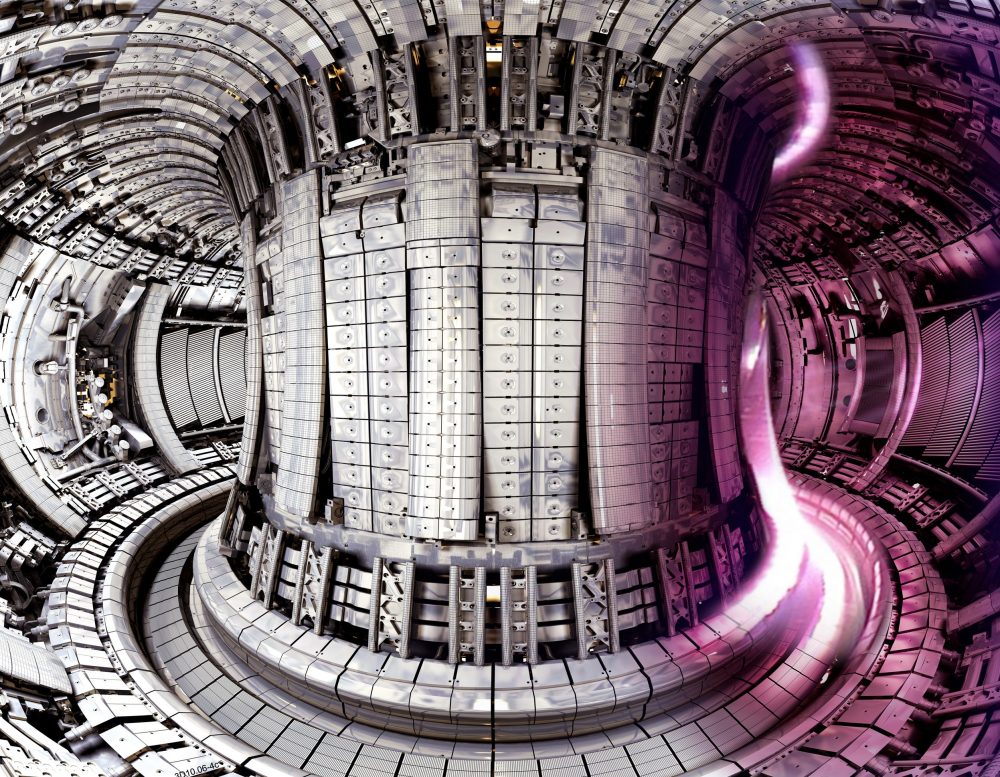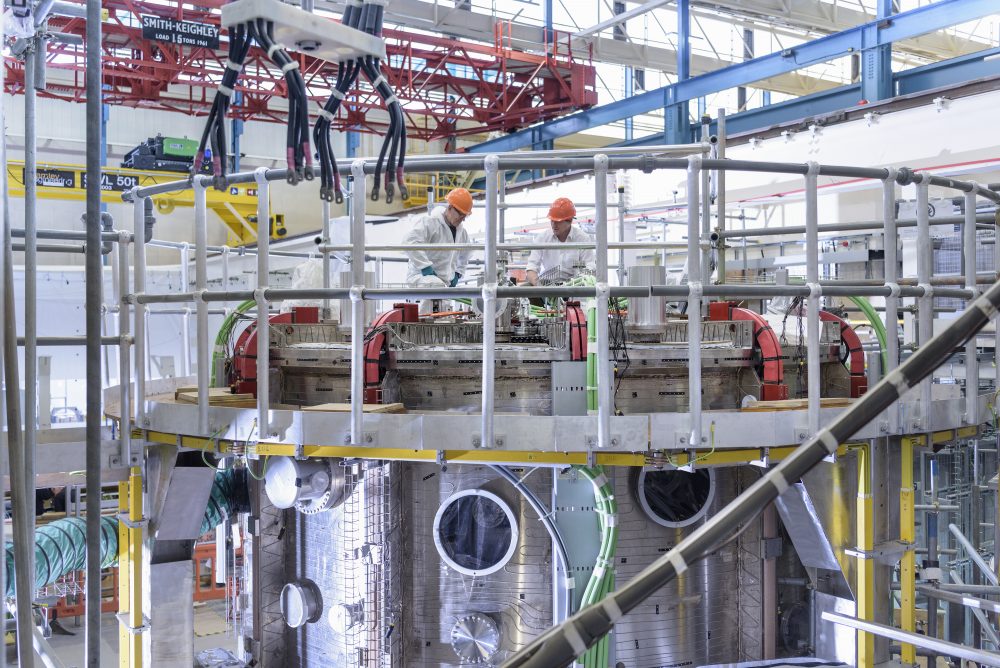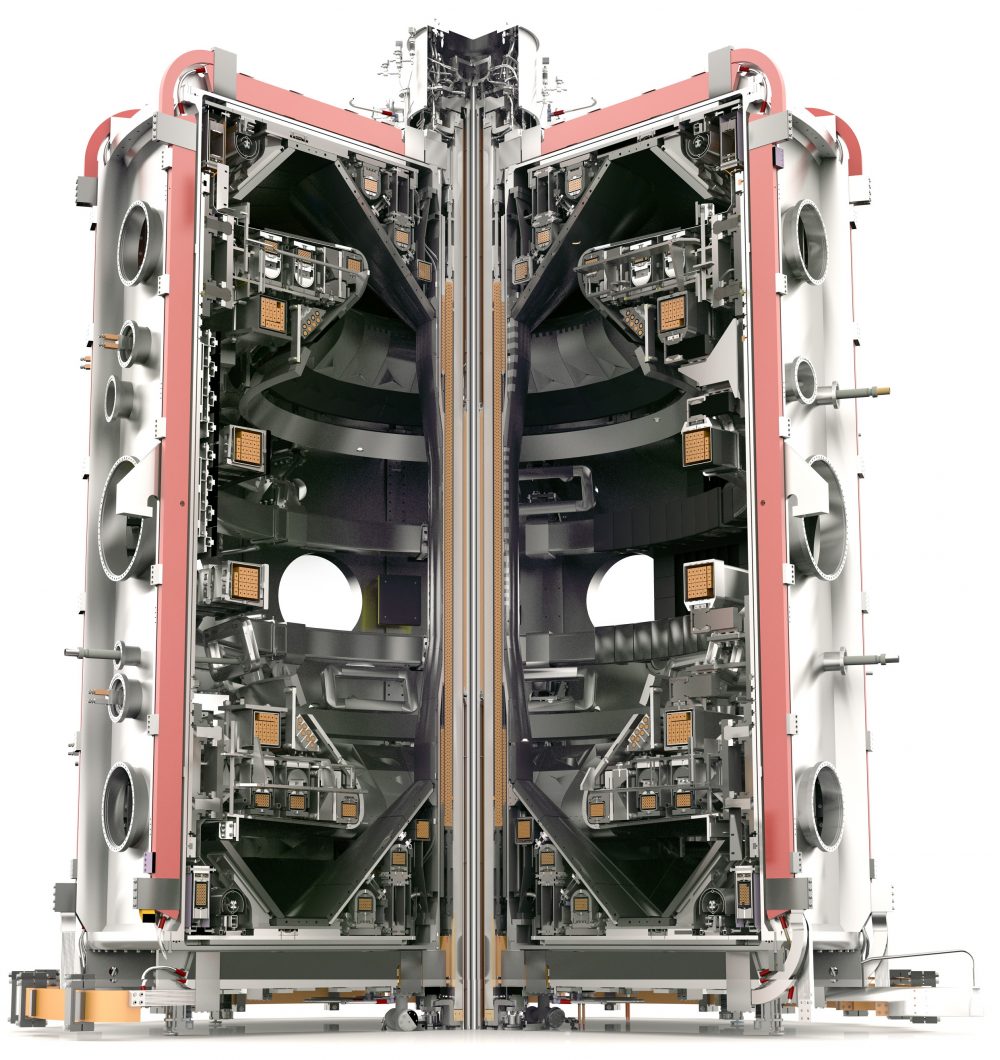Imagine a way of generating electricity that is carbon free; that produces electricity for millions of homes from just a few hundred kg of fuel a year; where the fuel is available in sea water and that leaves no long-lived radioactive waste legacy. Seem far-fetched and straight of out the pages of a science fiction novel? Well, it might be a lot closer than you think – this is the promise of Nuclear Fusion.

If you want to see fusion in action now, just look up at the stars at night. Our own Sun and all the stars in the sky are powered by the fusion (or sticking together) of hydrogen nuclei – to make larger nuclei, releasing energy as they do so.
For decades now, there has been a world-wide research effort to harness the power from fusion here on Earth to generate electricity… but it is not easy. Fusion only happens when the gas of hydrogen fuels (in our case, heavy isotopes of hydrogen called deuterium and tritium) is heated to temperatures in excess of 100 million degrees C. Improbable as this sounds, devices called tokamaks, which use powerful magnetic fields to successfully confine the hot gas (or plasma) of fuels away from the reaction chamber walls, have succeeded in confining the fuel at these extreme temperatures.

The world’s foremost fusion research laboratory is based in the quiet countryside of South Oxfordshire – the UK Atomic Energy Authority’s Culham Science Centre. Culham is home to JET – a joint European tokamak which UKAEA operates on behalf of European fusion researchers. JET holds the world record for fusion power produced – 16MW; the trick now is to develop machines which produce much more power than they use; continuously and reliably. Only then will fusion be making the electricity that boils your kettle.
The next step towards this goal is ITER – the international successor to JET currently under construction in Cadarache, France. When fully operating in the early 2030s, ITER will produce 500MW of fusion power (ten times the power needed to heat the fuel) for hours at a time. But to make fusion commercially viable, several key technology challenges still remain, including: designing remote handling systems to undertake maintenance inside and outside the tokamak vessel; testing materials which are structurally robust in the harsh environment of a future fusion powerplant and storing and breeding radioactive tritium fuel. UKAEA is working intensively with the rest of the fusion community, industry and academia to develop novel and innovative solutions to these problems.

Perhaps the greatest of these challenges is finding a way to remove or exhaust excess heat from the plasma. Components called ‘divertors’ have been developed on JET and many other tokamaks world-wide to do just that, but the power loading on the material surfaces is intense; equivalent to the power loading on a spaceship re-entering the Earth’s atmosphere and requiring replacement of the divertor every few years in future power stations.
The UK’s own MAST Upgrade experiment – due to start operation in 2019 – will test a new type of divertor. Building on the success of its predecessor MAST, it is a compact tokamak with a divertor design that steers the hot gas of fuels much further before spreading the power over a wider area. Predictions suggest overall power loading can be reduced by a factor ten – from that experienced by a re-entrant spaceship, to the levels in a modern car engine. This technical bit of innovative wizardry may seem obscure – but if the divertor in a future power station only has to be changed every few decades rather than every few years, this could be a real game changer for the economics of future fusion power stations.

Longer term, MAST Upgrade is testing the viability of compact tokamaks as smaller and cheaper powerplant designs – and cementing the UK’s world leading position in developing this transformative energy technology.
With the construction of ITER and advances in tackling the technology challenges, fusion is now entering the delivery era, and MAST Upgrade will be making a major contribution. As one of the founding fathers of fusion research, Lev Artsimovich said ‘Fusion will be ready when society need it.’ Well society needs it soon – and MAST Upgrade is playing its part in reaching that goal.
Learn more about humanity’s relationship with our nearest star in this blog series, based on our recent exhibition The Sun: Living With Our Star.
